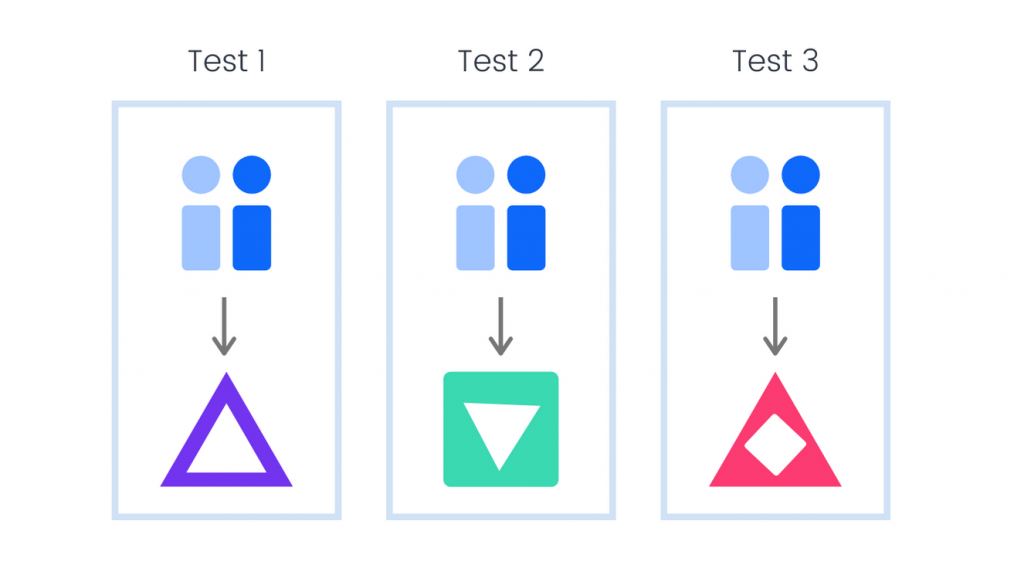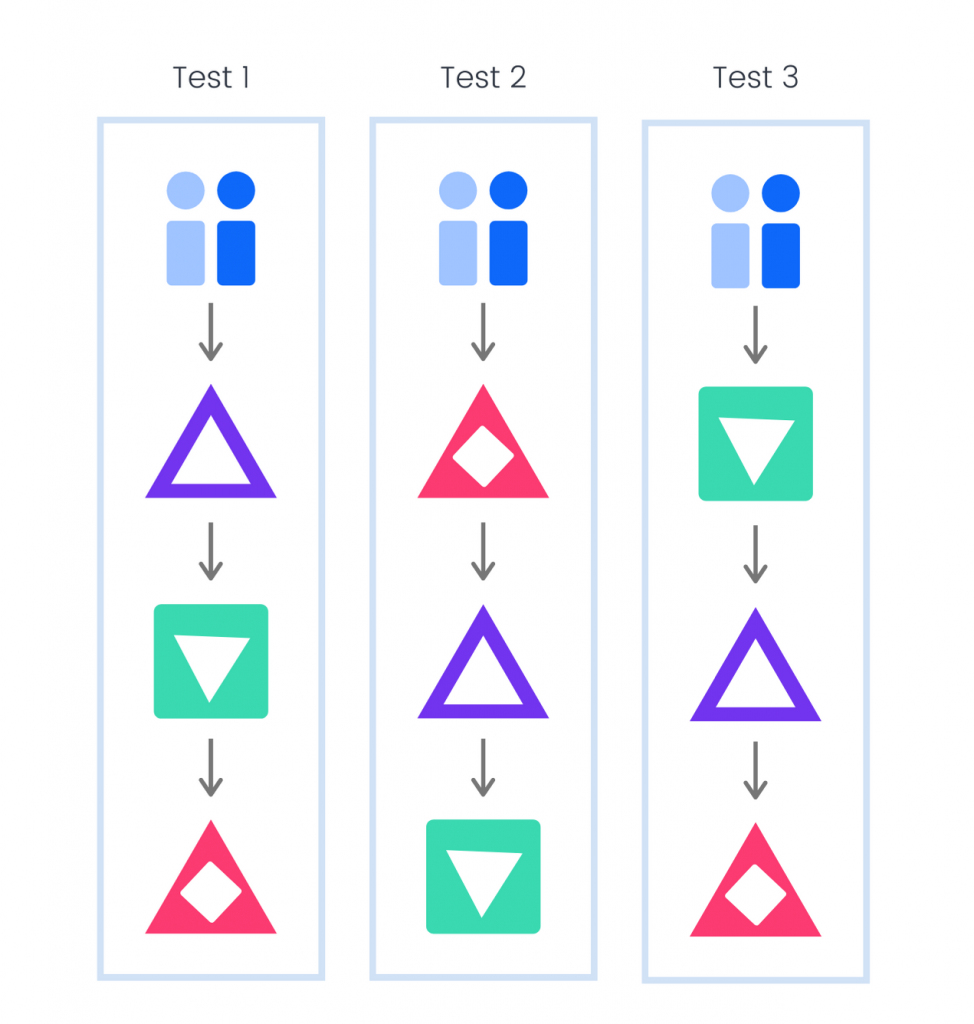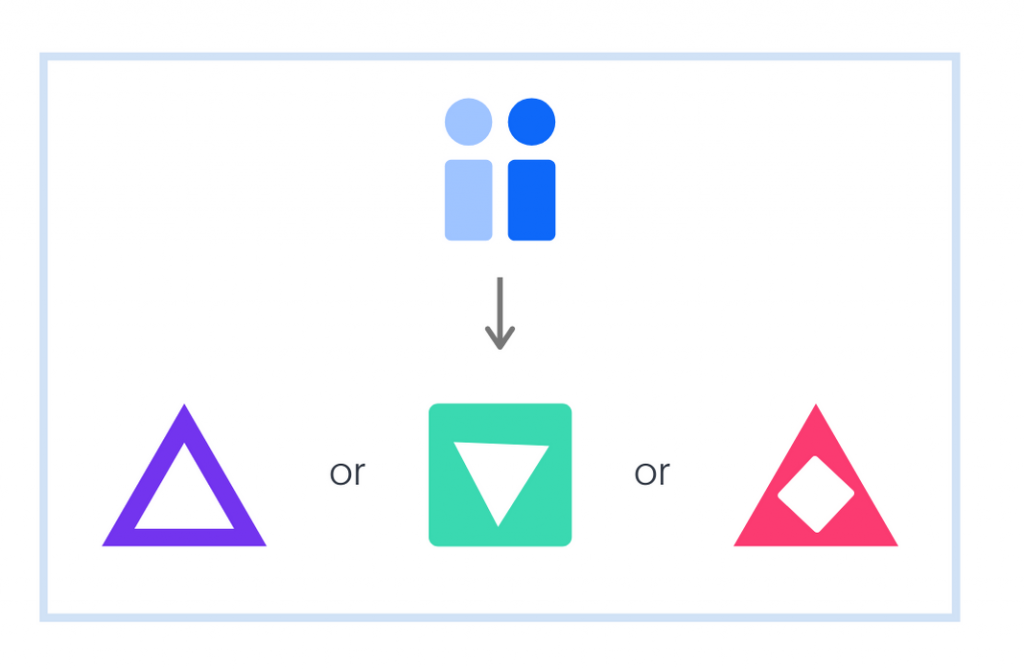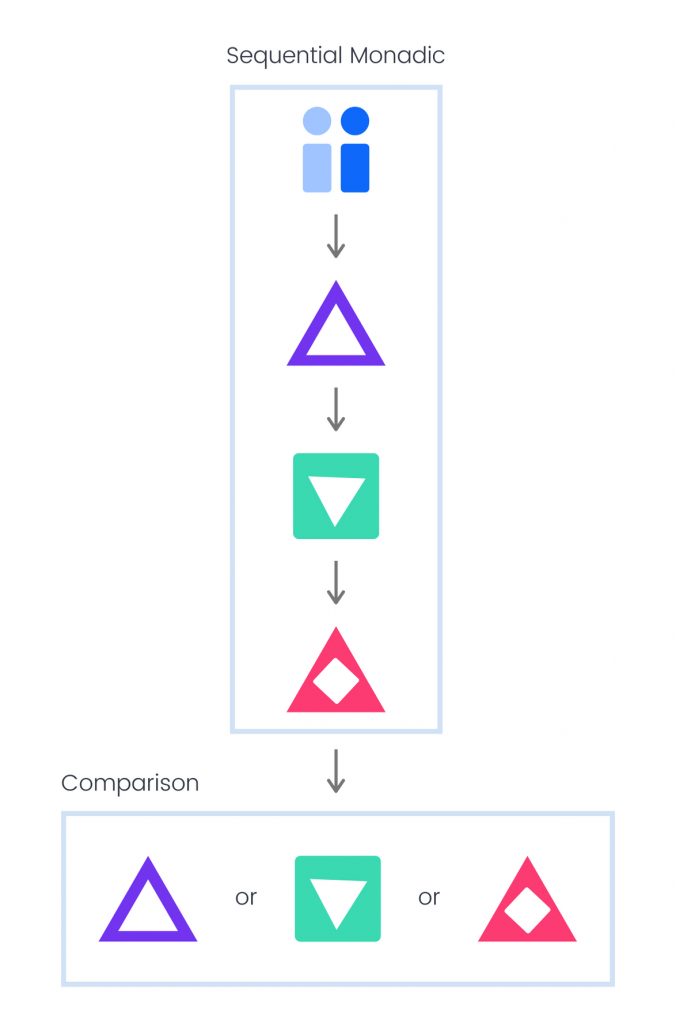Validating concepts with Monadic Testing
Researchers use monadic testing to gather feedback on a single concept from your target audience in a vacuum. The name originates from the Greek word “monos,” meaning alone. Another variation of this is a sequential monadic test— when an audience is questioned about two or more concepts in an isolated survey environment.
Monadic testing
A monadic test is a survey that investigates a single concept in depth with a target audience, broken into at least two groups. It is commonly used in product and concept testing, such as testing creative for a campaign or testing pricing or features for a product. These surveys tend to be short, but extremely focused.
Because respondents are only being asked for information about a single concept, monadic testing can go in-depth on the subject without creating a lengthy questionnaire. For example, in a monadic test for ad creative, the respondent might first be asked to give their opinion on a specific advertisement. Follow-up questions could include what they liked about the piece, the colors, the images, text, or emotions and feelings they experienced when looking at it.
If a researcher wants to evaluate multiple concepts, they will need to create multiple samples of the same audience, as each group will still only be reviewing a single concept. If in the earlier example there were three advertisements to be tested, there would be three surveys, each featuring a different ad and asking the same follow-up questions to determine specific details about it. Each survey would be sent to an audience sample that is made up of the same targeting criteria. The results would then be compared and analyzed to determine which creative was preferred by members of the target audience.

Benefits and drawbacks of Monadic Testing
Monadic tests expose respondents to one stimulus independent of contextual information. This gives researchers insight into a respondent’s thoughts about the product or concept when no external distractions are present and can supply some in-depth, clean data to confirm the idea when there are no constraints.
For example, a monadic test might reveal that respondents felt favorably towards a product, while they might express negative ideas about it given information about the brand or when compared to similar products. This lets researchers know that the issue may be related to brand perception or competitive solutions, rather than the product itself.
Because monadic tests exist to investigate a single concept, they can also go in-depth without becoming too long. This is especially helpful in formats like mobile surveys, which should be kept short enough to captivate the attention of respondents on the go.
A drawback to monadic testing is typically cost, as it requires more respondents to create multiple samples fitting the same targeting criteria to complete the survey in isolation. This can also be challenging when the audience targeting is very narrow and harder to find enough respondents to create two complete samples.
Sequential Monadic Testing
A sequential monadic test (sometimes known as a paired test) is a monadic test that asks respondents about two or more concepts in the same isolated environment. The concepts are often randomized to reduce survey bias but follow the same series of questions about each concept to determine key information.
An example might be asking groups of respondents in the target audience for opinions on an existing feature and a proposed new feature. One group might be shown the current feature first, while another group is shown the new feature first, then the existing one. Information is gathered to see which feature performed better with the target audience and if exposure to the existing feature played a role in the respondents’ reception of the new concept.

Benefits and drawbacks of Sequential Monadic Testing
Sequential monadic tests are often used when only a small target audience is available or when research budgets are lower. They can be more cost-effective since more concepts can be evaluated in one round, and fewer respondents are needed overall to maintain accurate results. This also means that sequential monadic tests are likely to be completed first.
However, sequential monadic tests are open to various kinds of survey bias. They can be affected by the Interaction Effect, when a respondent who is biased toward earlier concepts, rates others based on a comparison they are keeping in mind. For example, if a respondent sees an ad they like at the beginning, they may view the following ads relative to the first concept and be less likely to say they like them.
They are also at risk of order bias unless the concepts are shuffled regularly to ensure that respondents aren’t regularly being exposed to the concepts in the same order.
Questionnaires also tend to be longer with sequential monadic tests, as more concepts are introduced. This may mean lower completion rates, or if the questionnaire is kept short, the depth of the questions themselves may be limited.
Comparison Testing
Monadic testing and sequential monadic testing differ from comparison tests in that the audience is not being asked to compare different concepts, simply to supply feedback about them, often diving deeper into the concepts as a result.
Comparison testing specifically asks the respondents to compare two or more concepts against one another, such as ranking items in a list or choosing the “best” item presented.

Benefits and drawbacks to comparison testing
Comparison testing supplies easily digestible results. When respondents share that they like a product the best, or would pay more for a specific feature, it’s clear which concept is the winner.
However, comparison testing rarely supplies context. For example, if there was a specific detail that made the feature worth more to respondents, a comparison test would not reveal that information to researchers. If the detail is then missed when the feature is developed, it may not be the right feature or worth it to respondents to pay for it.
Protomonadic Survey Design
Protomonadic survey design refers to a monadic test that is followed by a comparison test. This is most often used with sequential monadic testing, where respondents are asked to evaluate several individual concepts, then choose the concept they prefer at the end.
Protomonadic research can be useful when validating a sequential monadic test, as it shows whether the preferred concept from the comparison is consistent with the feedback received about each concept.

Common uses for monadic tests (and variations of it) are ad-testing, product testing, concept testing, package testing, and more.
Monadic tests are a simple, yet effective, way for researchers to better understand the reasoning and details of a single concept so they can pivot their strategy, prioritize specific features, or replicate elements that tested positively across future projects.
Ally
Ready to Try Pollfish?
Create your survey with AI, target high-quality respondents starting at $0.95 per complete, and start getting results in just minutes in real-time. From running a simple product concept survey to managing a constant stream of trackers for dozens of clients in dozens of countries, we’ve got you.

